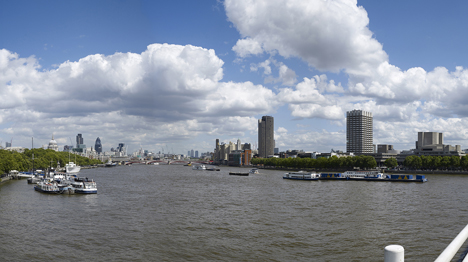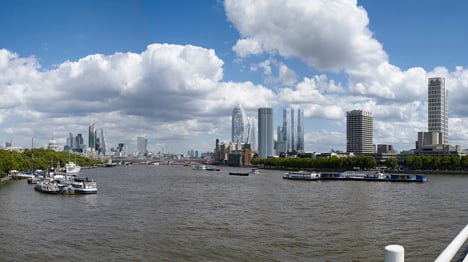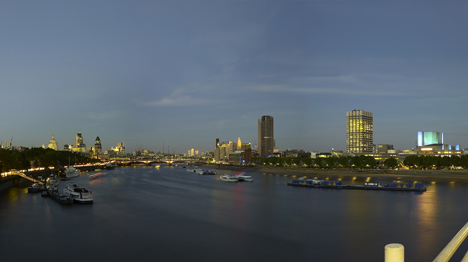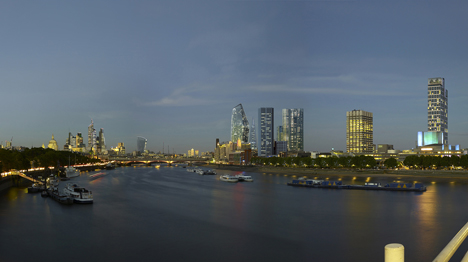London's future skyline captured in new visualisations
This series of images by architectural rendering studio Hayes Davidson envisages how London's skyline might look in 20 years time.
Over 200 towers with a height of 20 storeys or greater are planned in the UK capital over the next two decades and Hayes Davidson has visualised how these new buildings will appear alongside existing skyscrapers such as Renzo Piano's The Shard and Norman Foster's The Gherkin.

The images were created for an exhibition opening later this year at New London Architecture (NLA) entitled London's Growing... Up! which will chart the growth of tall building construction in London since the 1960s and look at the impact skyscrapers will have on the city in the near future.
"As London's population gets bigger and bigger, and new development for London takes place within the constraints of the green belt, we have to increase the density of the city," said Peter Murray, who is chairman of NLA and the exhibition curator.
"This results in our buildings getting taller. The huge number of towers in the pipeline will have a significant impact on the look of London."

New buildings such as the so-called "can of ham" by Foggo Associates and The Pinnacle by Kohn Pedersen Fox are featured, along with nearly complete structures such as the Leadenhall Building by Rogers Stirk Harbour + Partners and Rafael Viñoly's Walkie Talkie at 20 Fenchurch Street.
The exhibition opens to the public on 3 April 2014.
Here's more information about the exhibition from NLA:
London's Growing... Up!
The rise and rise of London's tall buildings
London's skyline is currently going through a massive change. Over 200 towers are planned in the capital in an attempt to meet the needs of the capital's growing population. So how will London's skyline change in the next 20 years?
This April, New London Architecture (NLA) – London's Centre for the Built Environment will explore this new skyline with London's Growing... Up! Through the use of images, video, models, CGI's and visitor interaction, the exhibition will present a past, present and future view of London's skyline as the capital's developers focus on building upwards rather than outwards.

There are over 200 towers, each more than 20 storeys, currently planned in London, around 150 of them new residential blocks. London's Growing... Up! offers a timely exploration into this hotly debated subject.
Since the emergence of skyscrapers in London in the 1960s, the capital's skyline has changed irrevocably. Visitors will explore the history of London's high‐rise architecture through images, models and construction videos, witnessing how iconic structures such as the Barbican and Centre Point set a precedent for the future of the skyline. A series of panoramic views of London chart the ever‐changing landscape, from the 1960s through to the modern day and demonstrating how London will appear in 10 years time.
Famous structures including Canary Wharf, The Gherkin and The Shard are examined in the exhibition, looking at their context, their economic raison d'etre and the impact they have on our understanding of the city.

The exhibition will also explore the significant growth in high‐rise residential development. High‐rise residential was once only seen on council estates and glass skyscrapers were reserved for the business world, but the growing trend of luxury towers is currently providing the majority of new developments in the capital. Areas such as Nine Elms, Waterloo and White City will be explored, looking at why these new areas are attracting high‐rise development and how luxury and affordable residential can coincide in London’s new vertical city.
Visitors will be able to have their say on what should or shouldn't be in the London skyline. Touch screen will enable guests to rewind time and fast‐forward to the future to see how London has, and will be, developed. Visitors will have the opportunity to remove or change the location of buildings they don't like and even add buildings from other cities, making their own metropolis which will be posted onto the NLA's Twitter feed.
Thursday 3 April – Thursday 12 June 2014
NLA, The Building Centre, 26 Store Street, London WC1E 7BT